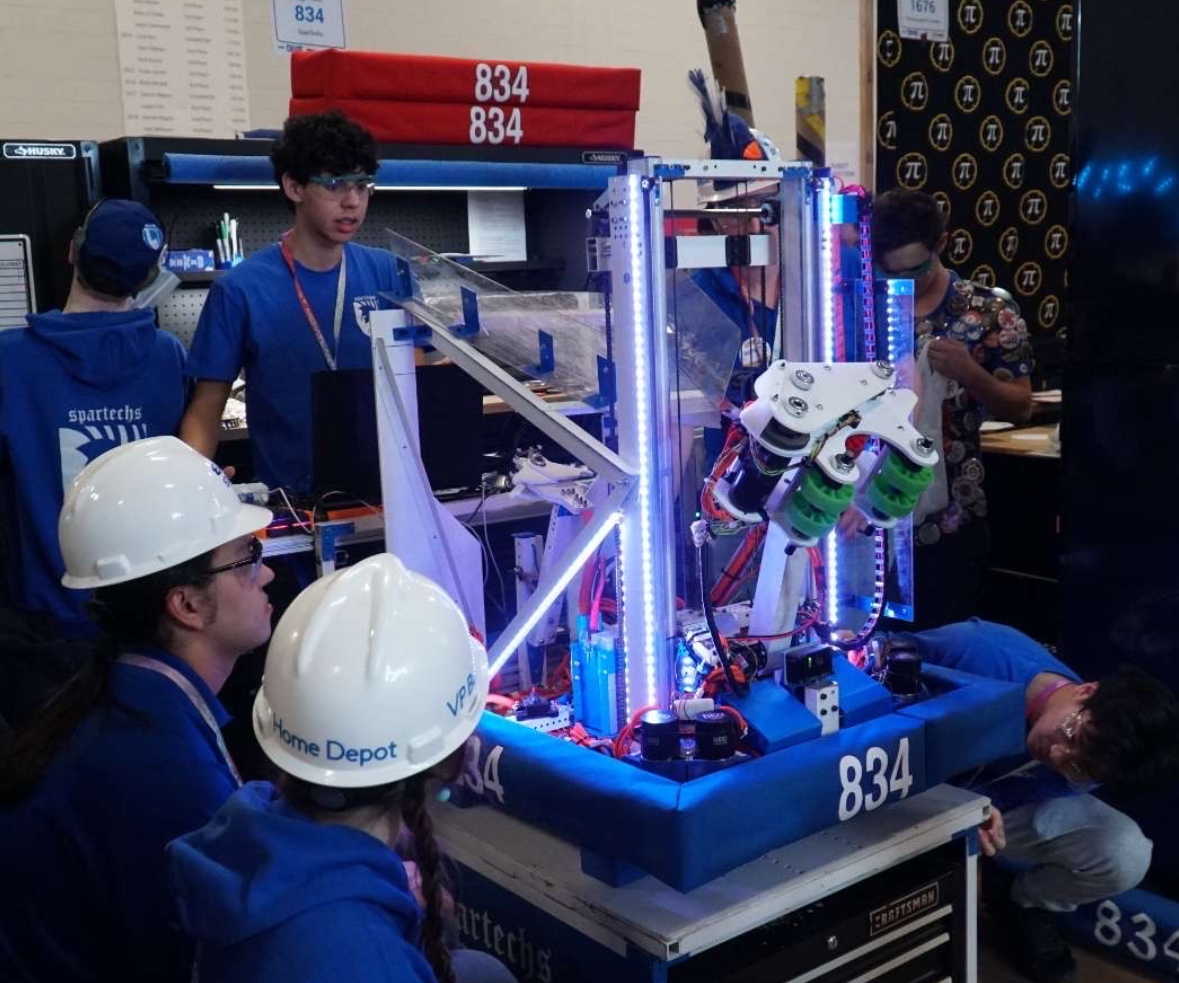For the second time in the past three years, the SparTechs robotics team is representing Southern Lehigh High School at the worldwide competition in Houston, Texas.
But while qualifying for worlds is an exceptional feat, conversation about the team has been minimal. Most students do not know that the team has made it to an international competition. Unlike other competitive teams such as varsity sports or speech and debate, robotics seems to go unnoticed.
Why is this? Why does our school community talk about some activities more than others?
The main reason is that robotics is not a traditional spectator sport. There is not a student section at their nearly weekly matches. There is also not a set schedule, as match times are only released the day of the competition, so students outside of the robotics team may not know when events are taking place. So, while peers could come out to support them, few make the trip.
However, this does not mean that the school cannot support these activities in different ways. The SLHS community can create a more inclusive environment by learning more about overlooked clubs. One of the simplest gestures would be to seek out a conversation with a student or staff member involved; these small but impactful gestures help build community.
One of the more actionable ways our school could support the robotics team is through finances. The team’s overhead is relatively high compared to other school clubs, directed towards expensive technical parts for the robot, paying competition registration fees, and so on. To cover these costs throughout the regular season, the team receives funds from the school and fundraises diligently on their own, selling snacks for its Student Activities Account and running its 501(c)(3) non profit SparTechs, which functions like a booster club, with donations from corporations.
Yet for district and worldwide level competitions, the team does not know whether they qualify until late in the season; therefore, it’s difficult to fundraise or get a request for registration fees approved in time. The fees themselves also tend to be significantly higher than those of other clubs, so district administration is hesitant to cover all of the cost. This year, the world championship registration fee alone was over $6000, and only around half was provided by the school; in the past, the school has provided the full amount.
Moreover, the team has to cover all their personal costs out of pocket. This year, the trip—including flights as well as room and board—costs around $900 per student, around a hundred dollars more than two years ago. Students learned that they had qualified only eleven days prior to the kickoff of worlds on April 14th, leaving very little time to raise these funds. As a result, many had to pay out of their own pocket, and this is no small amount of money; Robotics team director Mr. Robert Gaugler knows of at least one student who wasn’t able to attend because of finances.
While it is not unusual for students to pay their own travel costs for upper level competitions, very few school-affiliated activities have traveled as far as Houston—if only because very few school activities have qualified for a worldwide competition. The school should recognize the impressive achievements of these robotics students and reward them, at least by covering some of the overhead.
Despite massive success, SparTechs lack recognition
Spotlight Editors
•
May 3, 2025


